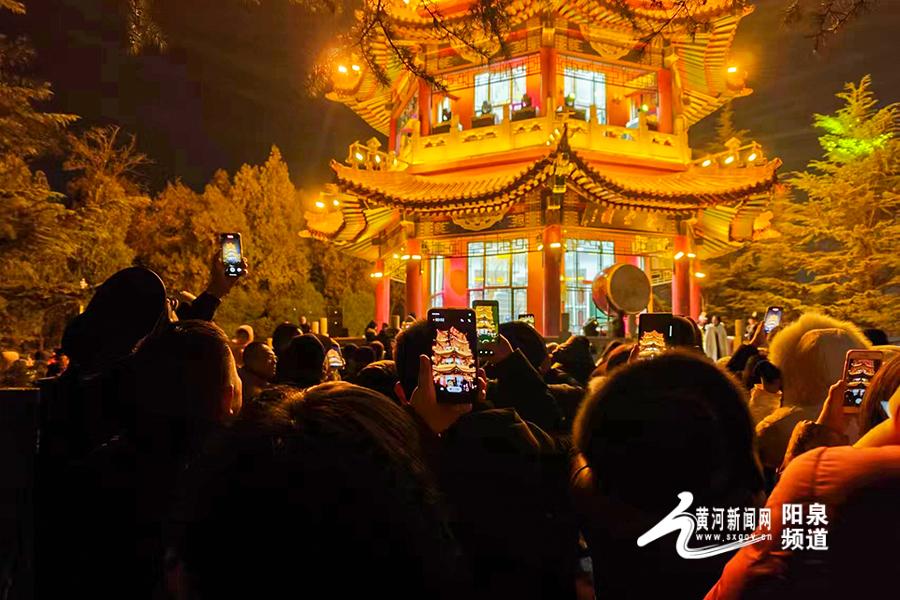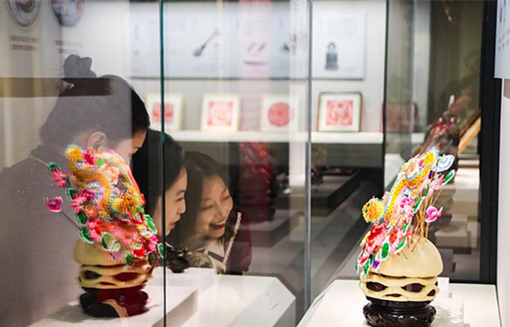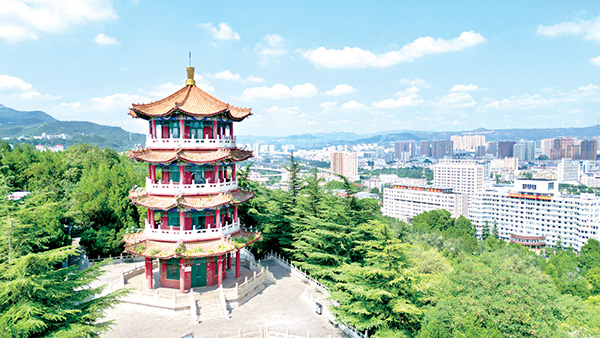Blueprint for central Shanxi unveiled
Cities in central Shanxi province will seize new opportunities for development.
The Shanxi Development and Reform Commission issued an interpretation of the 2022-35 high-quality development plan for urban agglomeration in central Shanxi on Nov 16.
The urban agglomeration in central Shanxi, covering 47.3 percent of the province's total area, consists of Taiyuan, Jinzhong, Xinzhou, Lyuliang and Yangquan. At the end of 2021, the area's permanent population was 16.13 million, and its regional GDP was 1.13 trillion yuan ($157.72 billion), accounting for 46.3 percent and 50 percent of the provincial totals, respectively.
The plan clearly states the goals that from this year to 2025, the growth rate of GDP and per capita disposable income in the urban agglomeration is expected to exceed the provincial average, the per capita GDP to exceed 80,000 yuan, and the urbanization rate of the permanent population to reach 73.5 percent.
The added value of the manufacturing industry is expected to account for more than 50 percent of the industrial added value above the designated size, and the added value of the core industries of the digital economy to account for 5.4 percent of the regional GDP.
The number of national key laboratories, technology innovation centers and engineering research centers is expected to double, and the average annual growth rate of R&D investment to exceed 20 percent.
Efforts will be made to significantly narrow the gap between urban and rural development and boost residents' living standards by 2030, infrastructure will be interconnected, and resource-based economic transformation will be completed first in the urban agglomeration which is expected to become a highly competitive urban agglomeration in central and western China.
By 2035, a number of world-class industrial clusters, global enterprises and internationally renowned brands are expected to emerge in the urban agglomeration, and efforts will be made to strengthen its leading role in supporting the high-quality development of the province.
To achieve these goals, cities in central Shanxi will focus on promoting a series of tasks.
They will jointly build a high-quality, livable and workable urban agglomeration, create a modern urban-rural development system, advance infrastructure interconnection, and build a modern comprehensive transportation system and an integrated energy and water conservancy guarantee system.
The coordinated development of industries in these cities will be promoted and market entities will be increased and incubated.
The urban agglomeration is expected to enhance collaborative innovation in science and technology, promote the gathering of innovation resources, build a regional scientific and technological innovation community, and build a talent hub.
Cities in the urban agglomeration will also strengthen ecological protection and restoration, and seek to become green and low-carbon cities.
In addition, they will improve public services by promoting high-quality employment and entrepreneurship, sharing high-quality education and medical resources, furthering cooperation on cultural and sports undertakings, and building an integrated social security system.



![9月6日[20230907-100556]_副本.jpg](http://subsites.chinadaily.com.cn/shanxi/yangquan/img/attachement/jpg/site48/20230907/16940658088291.jpg)

